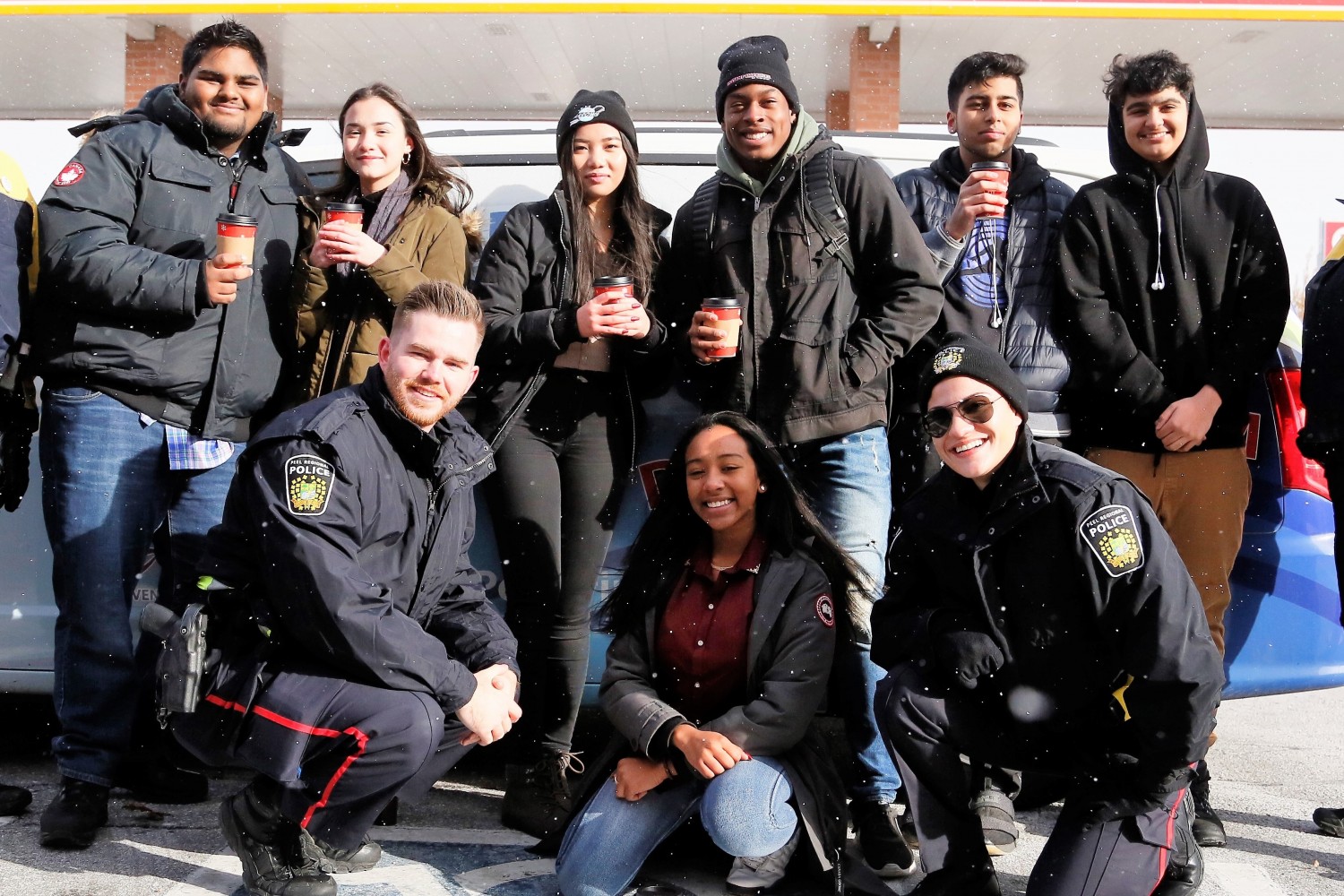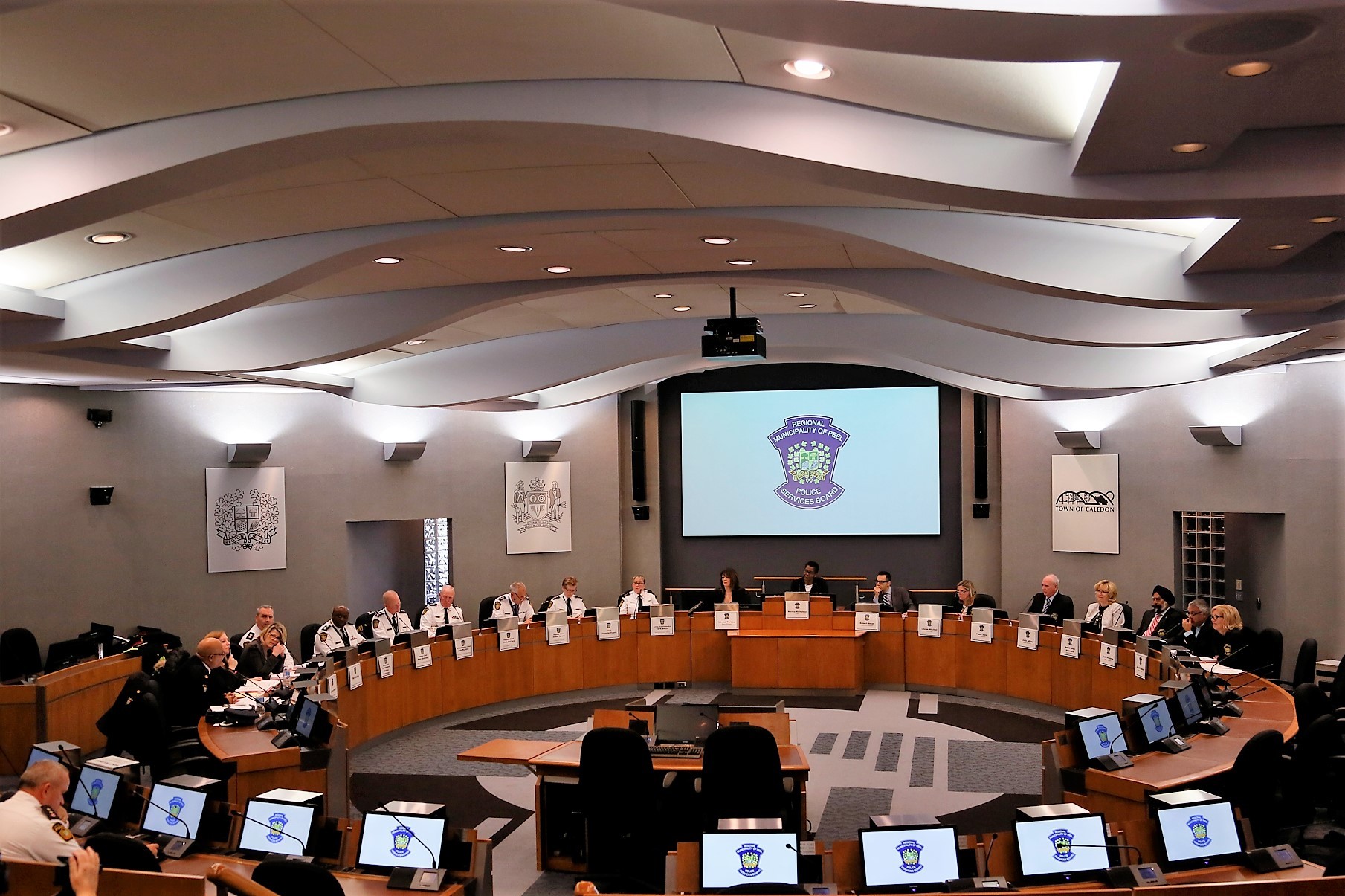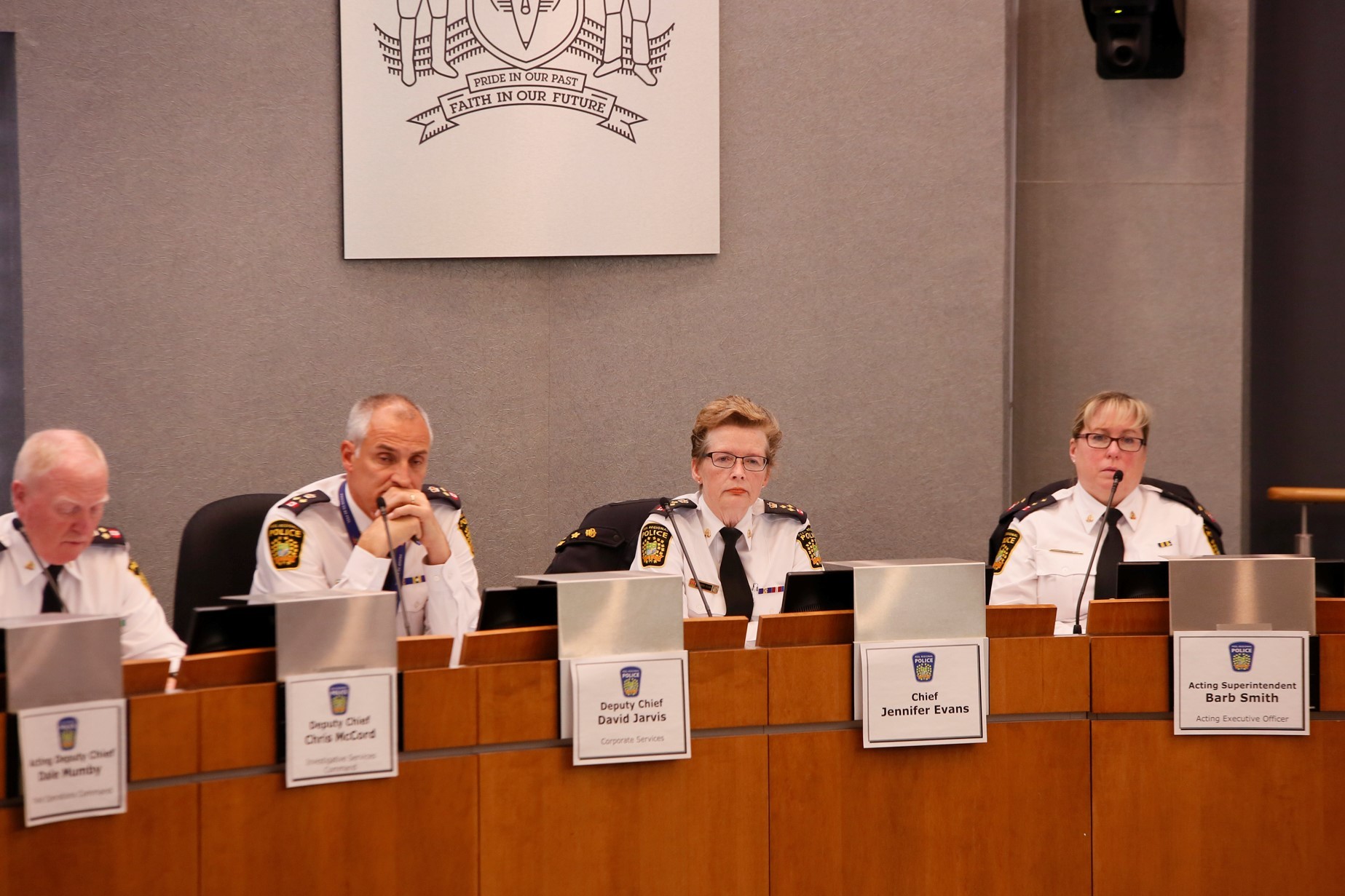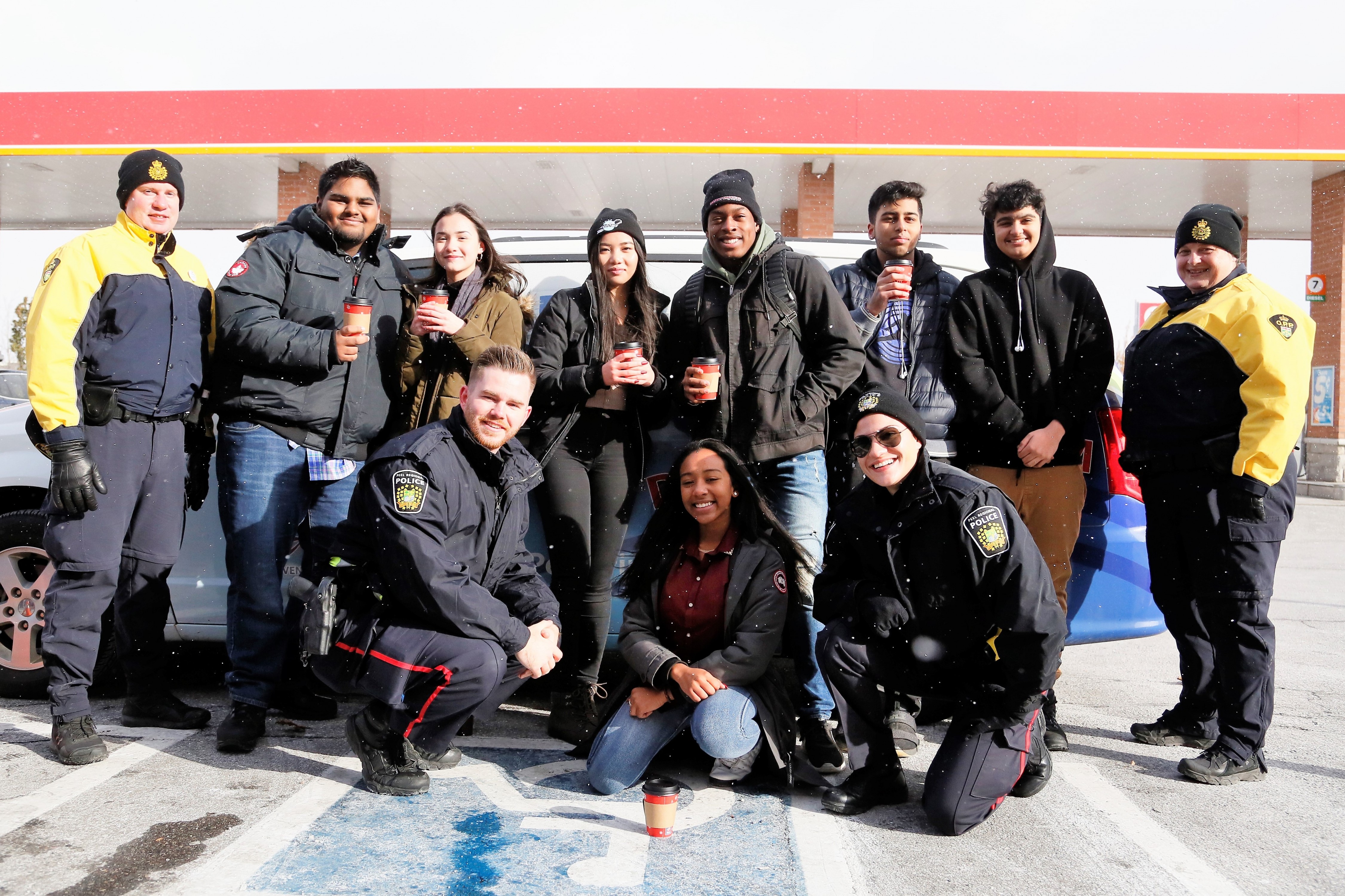
Peel police, local MPs look to Ottawa for money to help stem rising crime, youth violence
Peel police is looking to the federal government for funding aimed to confront increased youth violence across Brampton and Mississauga.
In a request sent to Public Safety Canada as part of the National Crime Prevention Strategy, Peel Regional Police wants $3.72 million for a new three-year project to reduce youth violence. The request comes as an apparent lack of funding for the force has started to create significant challenges, with violent crime on the rise and more and more young people turning to gang activity, including drug-related crime.
In a letter obtained by The Pointer, signed by all 11 Brampton and Mississauga MPs, and sent to Public Safety Canada in support of Peel’s funding request, the local politicians state, “the Peel Regional Police has started to significantly feel the strain of the lack of resources, and we firmly believe that there are funding gaps that need to be addressed.”
The letter highlights what the local leaders have been hearing from residents across the two cities as citizens have grown increasingly alarmed by reports of violent crime, much of it being committed by youth who seem more brazen, often carrying out criminal activity in broad daylight.
“Throughout the summer, we as Members of Parliament have been engaging with our constituents and listening to their feedback on issues that are important to them,” the letter continues. “We found that a recurring theme in our discussions was the rising number of reports of violent crime, especially among youth.”

Brampton North MP Ruby Sahota
A troubling trend has emerged. Youth, or those between the ages of 12 and 17, while accounting for only 7.7 percent of the Peel force’s policing population, accounted for 14 percent of all persons charged in 2017. The disproportionate numbers, with youth carrying out more than twice as much crime as some other age cohorts up to the population of seniors, suggests many young people are being easily lured into a life of violence and criminality.
Even more troubling is data that shows the severity of these crimes also appears to be increasing, as violence against persons (assault, robbery, sexual offences, harassment), saw a nine percent increase between 2016 and 2017, with 860 youth charged last year. The numbers in 2018 are keeping pace with the trend; up to October they show that 765 youth have been charged with crimes against persons so far this year. Crimes against property increased negligibly year over year, but still accounted for 524 young people being charged throughout 2017. There were 433 youth charged with crimes against property between January and October of this year.
Census data suggests these numbers will continue to rise if more resources are not put toward intervention programs to keep youth away from criminal circles, especially in Peel.
The region, including Caledon, has the highest percentage of those aged 0-14 in the Greater Toronto Area. Brampton and Mississauga are home to approximately 240,000 young people within this age group. In years to come, Peel police could continue dealing with a disproportionate number of youth as their cohort grows, with many of them, according to census data, living in relatively low socio-economic conditions. A 2015 United Way report came as a shock to many across the region.
It revealed the alarming connection between the rapid growth of Brampton and Mississauga and low income levels, which often lead to increased rates of criminality. Only two percent of Peel residents were low-income in 1980, earning between 60 and 80 percent of the average income in the GTA of $14,384. By 2000, the number spiked to 22 percent, while the average GTA income rose to $35,618, and, disturbingly, in 2015, when average income climbed to just over $50,000, 47 percent of Peel’s residents were low-income earners. Combined with the 4 percent who were "very low" income earners, the data meant that more than half of the region’s population was struggling to make ends meet.
During this period of rapid growth and a steep decline, relatively, of the average income for families, funding for youth programs and initiatives to keep them away from criminal activity has not kept pace with their rapidly growing population.
Funding for policing in general has not kept up with explosive population growth in the two cities.
Brampton and Mississauga now account for approximately 1.3 million people under the jurisdiction of Peel police. Currently, there are approximately 138 police officers for every 100,000 residents in the two cities, much lower than the national average which hovers around 188 officers per 100,000.
“Under the current funding model, this gap will continue to widen,” the MPs wrote in their letter.
Brampton North MP Ruby Sahota says she constantly hears from residents who feel increasingly unsafe in the city. A large issue, she says, is that strained police resources mean people wait for lengthy periods of time before an officer responds after a call for help.
“When people feel they’re not being responded to, they don’t feel safe,” Sahota says.
What she’s hearing from constituents echoes a poll commissioned by The Pointer and conducted at the end of August by Forum Research. Its survey of 999 Brampton respondents found that crime was the number one concern ahead of the October municipal election.
Asked if they feel safer now than they did four years ago, 65 percent of those surveyed said no; 10 percent said yes, and the remaining 26 percent said they feel equally safe.
Sahota and other MPs concerned about crime and youth violence appear to have at least one strong ally.
Newly elected Brampton Mayor Patrick Brown, who will sit on the seven-member police board, made youth programming, to keep young people away from criminal activity, a priority during his election campaign. He has also repeatedly highlighted the under-resourcing of Peel’s police force and the need for more initiatives to give young people who are at risk of being recruited into criminal activity, better alternatives.

Brown questioned why Doug Ford’s provincial government ignored Peel, while giving the Toronto police $25 million this summer to address rising crime, including gang activity that often involves young people.
The lack of funding for the force is sure to become a priority for the newly constituted police board.
It’s not something the force readily admits to, but it’s hard for police brass to point to the disparity between the average number of officers in Peel and the national average, without acknowledging the impact.

“Our goal, of course, is to work to reduce violent crime within our region and we dedicate a number of resources to work with our community toward this goal,” states Peel Police sergeant Matt Bertram. “The Peel Regional Police has an excellent reputation for collaborating with organizations to make our community safer. Our working relationships with the local school boards, local crime prevention associations and the Region of Peel contribute on a daily basis toward helping youth succeed.”
Most recently, a report on the ongoing efforts of Peel police to deal with youth violence in the region came before the Peel Regional Police Services Board, detailing the ongoing initiatives by the force to help interact, build relationships and counter the rising cases of youth crime in the two cities.
One such initiative hit the streets at the end of November and saw police handing out “positive tickets” to youth observed carrying out good deeds or good behaviour.
The program began in 2014, and to date has issued over 67,000 tickets in Peel Region, police say.
“Positive Ticketing offers opportunities for officers to interact with youth in a positive manner – some officers may use the coupons to recognize youth for wearing bicycle helmets, doing good deeds, participating in community activities, picking up trash, deterring crime or observing school crossing rules – while others may use the coupons as “icebreakers” to establish a rapport with youth in their patrol area,” Bertram states, citing the Peel police report on the matter.
Other ongoing programs by Peel police offer several ways officers can interact with youth while attempting to forge positive relationships.

These include the service’s neighbourhood policing units or school resource officers, the Youth Education bureau, the Youth in Policing Initiative, and a number of other education programs.
School resource officers are also placed into every secondary school throughout Brampton and Mississauga, acting as positive role models to students, while also helping with school fundraising initiatives, sports and other volunteer activities.
The program, with 72 uniform staff and 8 civilian staff from the force involved, costs about $9 million annually. A Carleton University study of Peel police’s initiative, using extensive interviews and feedback from five of the schools, was released early this year. It attempted to examine outcomes of the program, and found many benefits.
Some key findings included:
• Survey data that showed students related to the police officers at their school in a different, more positive fashion than they do to the police in general, supporting the idea that students who have more exposure to the police in a non-confrontational environment are more likely to form positive relationships with the police and see beyond the stereotypes of police that are common in our society.
• The school administrators working in the five schools in the study agreed that the School Resource Officer program allows school police officers to become part of the school community and establish trusting relationships with students, staff, teachers, and administration.
• By interacting with young people in non-threatening circumstances, the officers created positive impressions of police that contrast with the many negative examples of policing that are communicated through the media and negative experiences of some community members.
Though some critics argue that the presence of such officers in high schools criminalizes youth and often alienates some students who are not comfortable around police, possibly because of perceived negative interactions within their communities, many proponents in the two cities, including educators within the school boards, have said the presence of these officers has been overwhelmingly positive.
The Drug Education Unit also helps at the secondary level, teaching students about street level drugs, and a presentation called Identifying Vulnerabilities in Youth, which primarily focuses on human trafficking, online safety and sexting.
For the elementary school students, on top of the programs offered at the Peel Children’s Safety Village, the Youth Education Bureau provides education to these young students on a variety of topics, including drug awareness, bullying, internet safety, social media awareness and youth gangs.
The school-based initiatives are a key pillar in the province’s Ontario Youth Action Plan, created in 2012, which recommends that “early positive intervention” is the key to keep youth away from crime.
Few details were shared about the planned three-year project Peel police hopes to create if awarded the almost $4 million in funding it has requested. The Pointer asked Public Safety Canada for further details about the timing of the application and when a decision about its approval will be made. A response has not yet been received.
Submit a correction about this story


